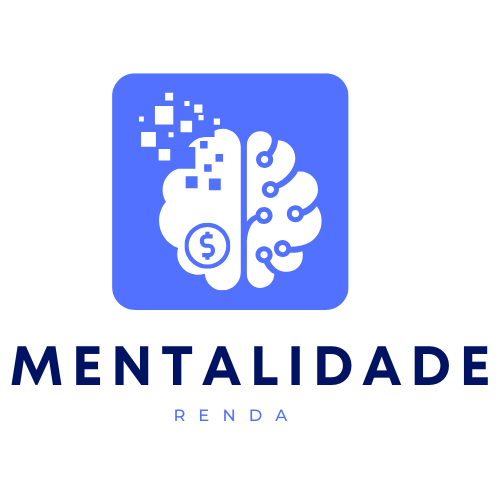In today’s digital marketing landscape, creating visually engaging and data-driven content is essential for standing out on platforms like Facebook and LinkedIn. Graphs and charts not only make your posts more engaging but also help convey important data in a clear and easily understandable way. AI tools are revolutionizing how businesses and content creators generate these impactful graphics, enabling them to create stunning, customized visuals in no time. In this article, we will explore how AI can assist you in creating visually appealing and impactful graphs for your Facebook and LinkedIn posts.

1. AI-Powered Graph and Chart Creation Tools
AI-powered tools can help you generate various types of graphs, including bar charts, line graphs, pie charts, and more, with minimal input. These tools can automatically analyze your data, choose the best graph type for your content, and format it for social media platforms.
How AI helps with graph creation:
- Canva: Canva offers AI-driven tools that help you create stunning graphs for social media. You can input your data, and Canva’s AI recommends the best chart or graph type to visualize it. It also automatically suggests color palettes and design elements that align with your brand identity. Canva’s user-friendly interface makes it easy to customize and create impactful visuals for Facebook and LinkedIn posts.
- Venngage: Venngage uses AI to suggest the best chart and graph types based on your data. It provides customizable templates that you can adjust with different colors, fonts, and icons to ensure the graphs match your social media style.
- Visme: Visme is an AI-powered visual creation platform that helps you design infographics, reports, and data-driven visuals. It offers smart templates and data tools that allow you to create graphs with AI-based suggestions for design, color schemes, and layout.
Why use it:
AI tools make creating impactful graphs quick and easy by providing automated design suggestions and customizable options. These tools ensure your graphs are not only visually appealing but also fit perfectly with your social media content.
2. AI for Data Visualization and Insights
AI can go beyond simply creating graphs by analyzing your data and offering insights that can improve the way you present it. These tools help you visualize trends and patterns in your data, making your content more engaging and informative.
How AI helps with data visualization:
- Google Data Studio: Google Data Studio is an AI-powered tool that allows you to create custom reports and graphs by linking your data from various sources. AI helps identify trends and visualize complex datasets, making it easier to create compelling graphs for your Facebook and LinkedIn posts.
- Power BI: Power BI uses AI to help you visualize data, identify patterns, and generate insights. It can automatically recommend the best way to display your data, allowing you to create more effective graphs and charts for social media content.
- Tableau: Tableau’s AI-powered features allow you to create advanced visualizations and gain insights from your data. It automatically suggests different chart types and highlights key data points, which can be used to create informative and attention-grabbing graphs.
Why use it:
AI-driven data visualization tools help you present your data in a way that is easy to understand and impactful. By identifying trends and insights, these tools help you create graphs that are both informative and visually appealing for your audience.
3. AI for Customizing Graph Designs
Once you’ve created your graphs, AI tools can help you enhance their design to ensure they match your brand’s style and are optimized for social media platforms. These tools can suggest colors, fonts, and layouts that will make your graphs stand out.
How AI helps with customization:
- Crello: Crello, an AI-powered design tool, helps you customize your graphs and charts by providing design suggestions based on your brand’s colors and style. You can easily tweak your graphs by adjusting elements such as background, fonts, and icons.
- Piktochart: Piktochart uses AI to automatically format your graphs and charts for social media platforms. It helps you customize the design by suggesting layouts and color schemes that make your data look visually appealing and engaging for platforms like Facebook and LinkedIn.
- Adobe Spark: Adobe Spark offers AI-driven features that help you enhance your graph designs with visual elements like icons, fonts, and background images. You can use it to personalize your graphs, ensuring they match your overall branding and social media style.
Why use it:
AI tools for customization help you create graphs that are visually appealing and aligned with your brand. These tools ensure that your graphs are not only informative but also aesthetically pleasing and suited for your social media platforms.
4. AI for Optimizing Graphs for Social Media Platforms
Each social media platform has specific requirements for image sizes and formats. AI tools can automatically optimize your graphs to fit the dimensions of Facebook, LinkedIn, or other platforms, ensuring they display correctly and look professional.
How AI helps with optimization:
- Canva: Canva’s AI features automatically adjust your graph’s size and format to suit the requirements of different social media platforms, including Facebook and LinkedIn. Whether you’re creating a post, story, or banner, Canva ensures that your graph is perfectly sized for optimal display.
- Snappa: Snappa uses AI to resize your graphs and graphics for social media platforms, including Facebook and LinkedIn. It automatically adjusts the dimensions and layout to make sure your content fits perfectly within the platform’s guidelines.
- Adobe Spark: Adobe Spark provides AI-powered resizing and formatting tools that automatically adjust your graphs to meet the size requirements of Facebook, LinkedIn, and other social media platforms. This saves you time and ensures your visuals are optimized for every platform.
Why use it:
AI-powered optimization tools ensure that your graphs are the correct size and resolution for each platform, making it easier to share high-quality visuals without worrying about resizing or formatting issues.
5. AI for Creating Interactive Graphs
Interactive graphs and charts can be more engaging for users, as they allow your audience to explore the data themselves. AI tools can help you create interactive graphs that provide a more dynamic experience for your followers on Facebook and LinkedIn.
How AI helps with interactivity:
- Flourish: Flourish uses AI to create interactive data visualizations that can be embedded into your social media posts. You can create dynamic charts and graphs that allow users to hover over or click elements to explore the data in more detail.
- Infogram: Infogram provides AI-powered tools to create interactive infographics and graphs. It allows you to add interactive elements to your graphs, such as clickable charts or embedded links, making your social media posts more engaging.
- Google Charts: Google Charts offers AI-based tools for creating interactive charts and graphs that you can embed on your social media pages. It allows you to customize the interactivity and functionality of your graphs to engage your audience.
Why use it:
Interactive graphs engage your audience more effectively by allowing them to explore the data themselves. This added level of interactivity can increase engagement and make your content more shareable.
6. AI for Data-Driven Content Suggestions
AI can also help you identify what type of data your audience is most interested in, allowing you to create content that resonates with them. By analyzing trends and audience behavior, AI can suggest topics and data to share in your social media posts.
How AI helps with content suggestions:
- BuzzSumo: BuzzSumo uses AI to analyze trending topics and popular content across social media platforms. It can help you identify the best data to share in your posts, making your graphs more relevant and engaging to your audience.
- AnswerThePublic: AnswerThePublic uses AI to show you the questions people are asking about certain topics. By identifying common queries, it helps you create graphs and charts that provide valuable insights and data that your audience is already interested in.
- Sprout Social: Sprout Social’s AI-powered analytics help you track which types of content and data are performing best on your social media channels. By analyzing trends, it suggests the most engaging data to visualize and share in your posts.
Why use it:
AI-driven content suggestion tools help you focus on the data that will resonate most with your audience, ensuring your posts are relevant and impactful.
Conclusion
Creating impactful and engaging graphs for your social media posts on Facebook and LinkedIn has never been easier, thanks to AI-powered tools. From automating the graph creation process to providing customization options and optimizing for different platforms, AI helps you generate professional-looking graphs that captivate your audience and effectively convey your message.
By leveraging AI tools like Canva, Venngage, Google Data Studio, and Flourish, you can quickly create visually appealing and informative graphs that will boost your social media engagement. Whether you’re sharing market trends, performance data, or industry insights, AI makes it easier than ever to present your information in an attractive and compelling way.
